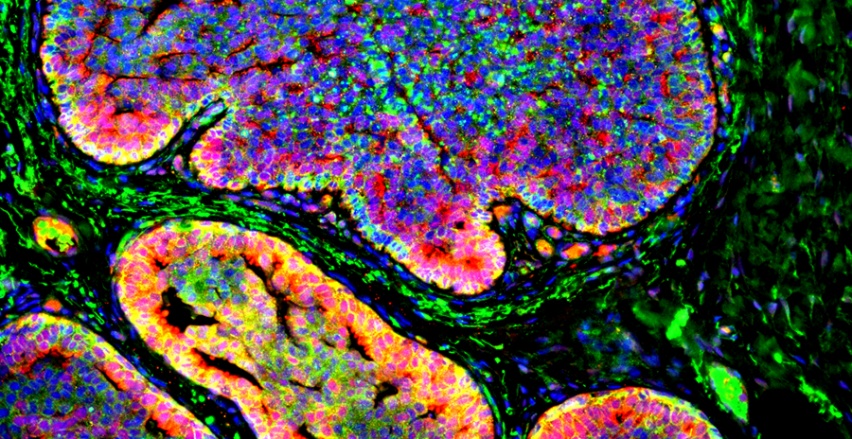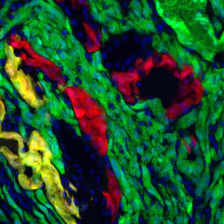
Does tumor acidification correlate with cell invasion? This image from the Gertler Lab shows that tumor cells in an acidic environment express enzymes that help them break through the extracellular matrix and invade surrounding tissue. Credit: Nazanin Rohani Larijani
Primary tumors are seldom lethal—most cancer deaths (roughly 90%) are caused by metastasis. Cancer cells mutate and spread to far-flung regions of the body where they are difficult to investigate and eradicate. However, very little is known about the cellular and molecular changes that drive metastasis or the conditions inside or immediately surrounding the primary tumor that facilitate those changes. Metastatic cancer cells must acquire traits that not only allow them to detach themselves from the primary tumor and move through the body, but to successfully invade and colonize new tissue environments. They become more resistant to the body’s immune defenses, and can even co-opt biological systems to facilitate their growth and spread.
Through the Ludwig Center at MIT, we are identifying the genetic and molecular transformations as well as the cellular interactions that encourage metastatic spread and allow cancer cells to survive and thrive in disparate locations. Our researchers are also devising methods to identify and visualize sites of metastasis earlier in the disease, and to intervene therapeutically in this deadly process.



